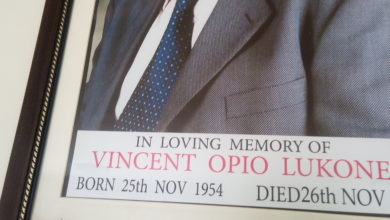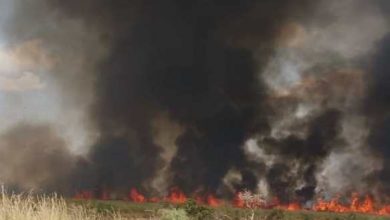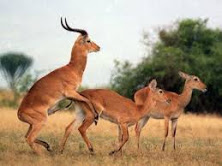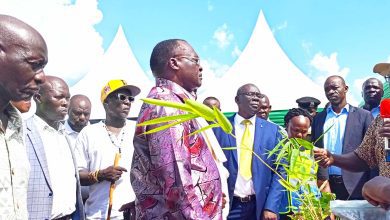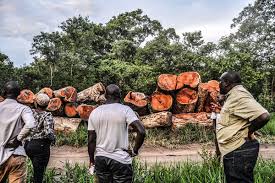Environment
UGANDA: AMURU DISTRICT ENDOWED WITH ONE OF THE BIGGEST MINERIAL DEPOSITS IN AFRICA.
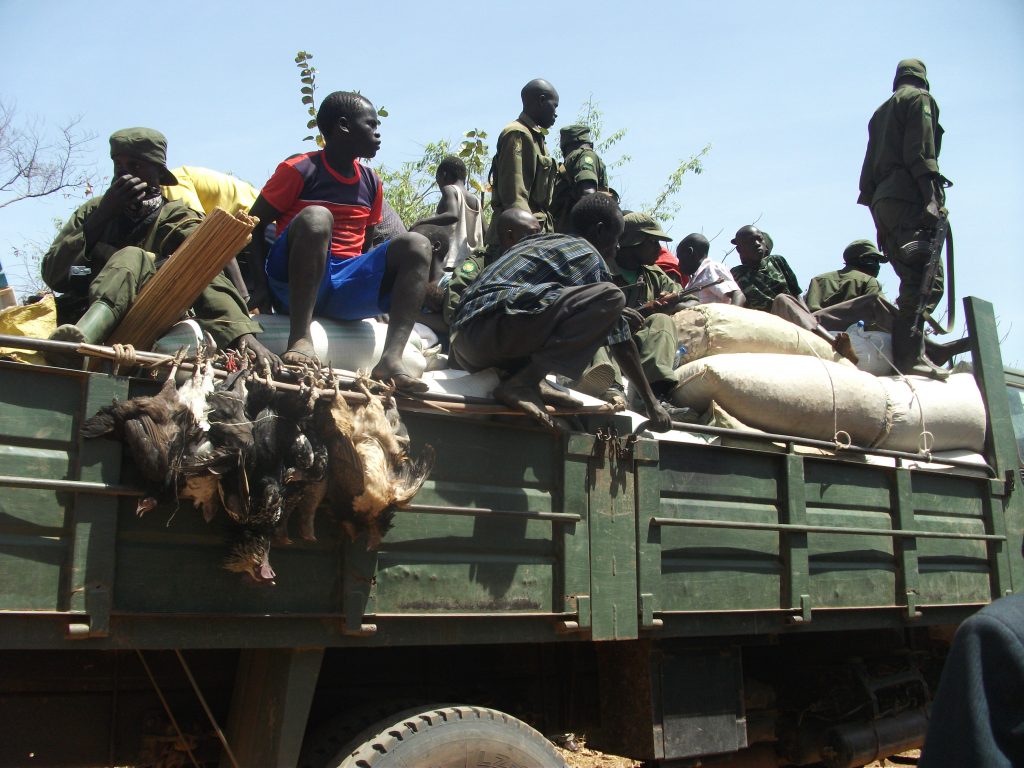
The UPDF, Uganda Wildlife Authority UWA and Uganda Police Forces is a evicting Apaa community in a land grabbing scheme by Uganda dictatorship as part of Adjumani district
Narrative investigative report.
Kampala regime is silent about the present and biggest oil & gas, including Uranium deposits in Acholi Sub Region, which is located in Lakang and Apaa the center of tribal conflict between Acholi and Madi communities in Northern Uganda.
Intelligence analyst from the Great Lakes Region who requested not to be named for security reason, mute that the current conflict at Apaa in Amuru district is being fueled by the government of Uganda as scapegoat to justify grabbing of oil and Uranium belt in Acholi Sub Region.
GULU-UGANDA:A report by the Great Lakes intelligence experthas come up with three theories about the ongoing conflicts between the communities of Acholi and Madi in Apaa and Lakang.
The report dwells on a presumably undisclosed discovery of vast deposits of Oil & Gas and Uranium in the contested areas which was first explored by Tullow Oil in 2004. Tullow oil which would gradually scale down on its investments in Uganda in 2012, by selling off more than a half of its shares in the ExplorationArea 2 (EA2) in the Albertine region over what the company’s reports indicates wasinsufficient amount of oil in the area.
However,the report by the Great Lakes intelligence expertindicates that the government of Uganda gave directives to Tullow Oil not declare their findings but should instead go ahead and declare a misguiding one with the intention not to alarm and draw interests from the Acholi communities on whose land the oil reserves lies.
The reports goes on to reveal a sinister plan by the government to declare the oil wells in Rii 1-6, Jubi 1-6 and Raa 1-6 as a game park and that it belongs to the Banyoro, an ethnic group south of Acholi region- to denythe Acholis claims of oil royalties.
In the same vain, the government has gone ahead to declare Apaa, which was an enclave under the administration of Amuru district, in Acholi as belonging to Adjumani district and indeed in 2017 Tom Butime Minister for Local Government transferred Apaa an area covering 827 square miles under the administration of Adjumani district. This the report says was a means to deny the Acholis claim to mineral rights in the mineral rich area.
Black Star News investigations has unearthed shocking discoveries behind the Apaa and Lakang land conflicts which eventually culminated in the ongoing conflict between the Acholi and Madi tribes being orchestrated by Uganda’s 2nd deputy Prime Minister Gen. Moses Ali also a Madi and leader of Government Business in the Ugandan parliament.
Gen. Ali, a regime’s right hand man has been ferrying his tribesmen including others from Bara and Kuku from South Sudan to the contested areas after training them in militia confrontational tactics so that he can lay claim that the area was originally and is being occupied by those tribes.
According to reliable local sources, Gen. Moses Ali has been seen ferrying rudimentary weapons consisting of bows, arrows and machetes in lorriesfrom Eastern Democratic Republic of Congo (DRC) into Uganda distributing them to his militias in the contested areas which are then used to intimidate, kill and destroy properties of the Acholi people.
Okello Mark, a Gulu University don in the faculty of Development Ethic, Communication Strategy and Governance confirmed that the discovery of Oil and Uranium in Apaa and Lakang is the main cause of the current conflicts between the Acholi and Madi communities.
Okello says the government of Uganda wants to displace the Acholi people from this land so that they can operate at freewill and deny the rightful owners the wealth associated with the minerals
“Thereare issues of oil;the government of Uganda has discovered the biggest oil and uranium deposits in Amuru district… although the extraction has not yet started preparation is on high gear and extraction is expected to start in 2020” Okello reveals.
Okello wonders why the area currently being contested has no social services and other government led developments like hospitals, schools, road infrastructures and others if indeed there was nothing sinister the government is covering and doesn’t want the communities to know.
Okello argues that the key players in this land grabis Gen. Moses Ali as an individualand MadhvaniGroup of Companies as the front investor
According to Okello, Apaa and Lakang has the biggest oil and uranium deposits in Africa including Calcium, Cobalt and other many minerals that has so far been discovered.
This has been confirmed by Wilson Awuzu,who works in the department of Land Use, Registration and Compliance under the Ministry of Lands, Housing and Urban Development
Ata physical planning workshop in Gulu two months ago, Awuzu instead of quoting Apaa and Lakang in Amuru district as having one of the biggest Oil and Uranium deposits in Africa, instead mentioned Adjumani district. Mining and Exploration The NUEC region is endowed with mineral resources, the recently concluded geological, geochemical and airborne geophysical surveys revealed potential for mineral resources. The mineral range from metallic minerals such as Gold, Copper, Wolfram, lithium; Industrial minerals such as Asbestos, mica, Mable, limestone, Granite, Graphite’s and Uranium and Rare Earth Elements (REE). The region’s mineral deposits are more to the Northeaster and Eastern part of the region in Kaabong, Abim, Kitgum, Pader and Kotido.
Black Star News has discovered that River OketoWat at Acoliber, Puno DyangGazi area is the location of the biggest oil in Apaa enclave
Olyel Mark a guide from Puno Dyang also confirmed that there is a uranium site located at River Arii which is within Puno Dyang in Apaa.
Olyel says Puno Dyang is 40 kilometer west of Apaa, but to go there you must get the consent of the community of Apaa, because the area has been sealed off for visitors.
According to Olyel, rivers Oyobi, which is 60 kilometer west of Apaa, Wii Akee dam and Lee has been confirmed to have huge deposits of Oil and Uranium.
However, during the National Media Workshop in Kampala organized by the Atomic Council Officials on Friday March 23, 2019, Noah DeogratiasLuwalira, the secretary and the Chief Executive Officer of Atomic Energy Council noted that there is indeed a deposit of Uranium in Uganda.
Despite the pressure mounted on him by journalists to point out where the mineral is found, Luwalira declined to point out the exact places where this mineral is located, referring them to the Ministry of Energy and Mineral Development.
Despite revelations that there are vast deposits of minerals in these areas and some being mined already, the communities there continue to wallop in abject poverty and lack of the necessary services as stated by Okello of Gulu University“I went to Keyo village where foreign construction companies are extracting quarry works; you find that the place is totally degraded without anything to benefit the communities”
Utility
Conclusion The Northern region is renowned for its rich natural resources base. This consists of oil and gas in the north-west, minerals in Karamoja, water and hydroelectric power potential along the Nile river basin, fertile agricultural soils, as well as wildlife and rich biodiversity.
The region is strategically located on the main gateway to South Sudan and the Democratic Republic of Congo (DRC) and can therefore, contribute immensely to Uganda’s “prosperity for all” aspirations, through harnessing regional trade and creating more wealth for the communities in the Northern region corridor.
There is belief that this vast resource endowment of Northern Uganda should be able to spur economic development, however, this only adds to the region’s development paradox. This is because of the recurrence of conflicts in the bordering countries (such as South Sudan, the DRC etc.) as well as the region’s lack of institutional frameworks and the shortage of skilled human capital, which are required to make development a reality.
Notwithstanding the aforementioned development potential of the region and efforts to turn around its human development on a sustainable basis, the region still lags behind the rest of Uganda in many respects. In conclusion, this report presents the current situation analysis of the 17 districts in Northern Uganda Economic Corridor and forms a basis for the preparation of the Regional Physical Development Plan for the NUEC region.
The Regional Physical Development Plan will set out the Physical Planning framework for the Region

